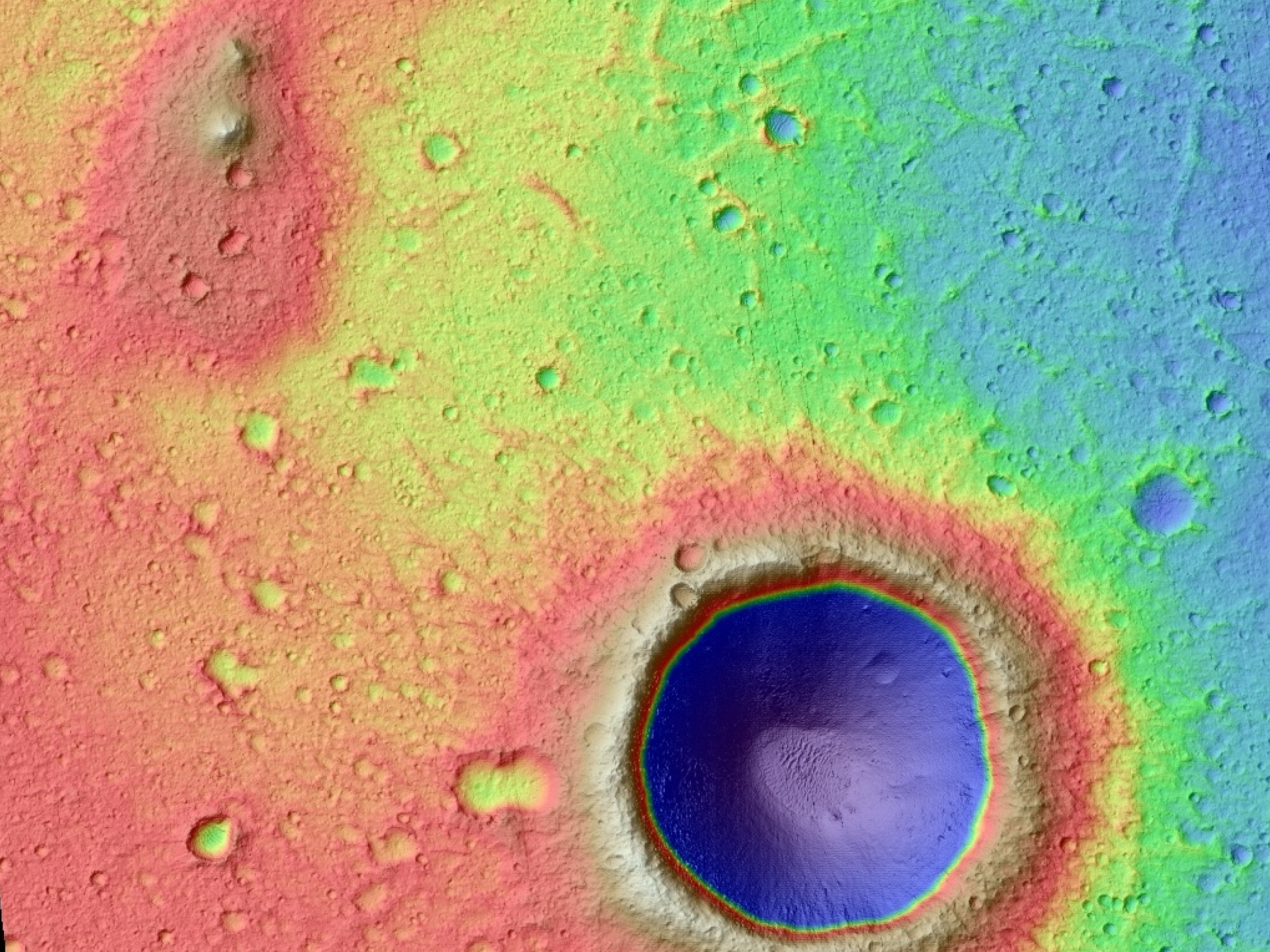Here we have the first HiRISE-produced digital terrain model of the Mars Pathfinder landing site.
The 4 July 1997 landing marked the first surface mission to Mars since the Viking Mission in the 1970s and was largely seen as emblematic of NASA’s new model of “faster, better, cheaper.” NASA used an innovative petal design, air bags, parachutes, retro rockets and other hardware to “soft land” the main science platform and Sojourner Rover, all of which can be viewed in
HiRISE images or
Pathfinder’s gallery pan. (
See the full write-up by the late Nathan Bridges who worked on that mission as well as on HiRISE.)
It was also one of the first viral moments of the relatively new “Worldwide Web,” where millions of people across the world (including the author of this post) used their dial-up modems to slowly download
new images and other data from the surface of Mars.
As these 2006-2007 data was acquired as a high priority stereo pair during the first roughly 2000 orbits of MRO’s science mission and nearly 10 years after the seminal mission, the digital terrain model largely confirms pre-landing conditions. Terrain here is relatively flat with only approximately 300 meters of relief, mostly due the largest crater in the scene and the hills dubbed “Twin Peaks,” first imaged by Pathfinder.
ID:
PSP_002391_1995date: 29 January 2007
altitude: 284 km
https://uahirise.org/hipod/PSP_002391_1995
NASA/JPL-Caltech/University of Arizona
#Mars #science #NASA
